Blog
Geri Antoinette Allen (June 12, 1957 – June 27, 2017) was an American jazz pianist, composer, and educator. She taught at the University of Michigan and the University of Pittsburgh.
Allen was born in Pontiac, Michigan, on June 12, 1957, and grew up in Detroit. “Her father, Mount Allen Jr, was a school principal, her mother, Barbara, a government administrator in the defence industry.” Allen was educated in Detroit Public Schools.[3] She started playing the piano at the age of seven, and settled on becoming a jazz pianist in her early teens.
Allen graduated from Howard University‘s jazz studies program in 1979. She then continued her studies: with pianist Kenny Barron in New York; and at the University of Pittsburgh, where she completed a master’s degree in ethnomusicology in 1982. After this, she returned to New York.
more...Armando Anthony “Chick” Corea (June 12, 1941 – February 9, 2021) was an American jazz composer, pianist, keyboardist, bandleader, and occasional percussionist. His compositions “Spain“, “500 Miles High“, “La Fiesta”, “Armando’s Rhumba”, and “Windows” are widely considered jazz standards. As a member of Miles Davis‘s band in the late 1960s, he participated in the birth of jazz fusion. In the 1970s he formed Return to Forever. Along with McCoy Tyner, Herbie Hancock, and Keith Jarrett, Corea is considered to have been one of the foremost jazz pianists of the post-John Coltrane era.
Corea continued to collaborate frequently while exploring different musical styles throughout the 1980s and 1990s. He won 27 Grammy Awards and was nominated more than 70 times for the award.
Armando Corea was born in Chelsea, Massachusetts on June 12, 1941, to parents Anna (née Zaccone) and Armando J. Corea. He was of southern Italian descent, his father having been born to an immigrant from Albi comune, in the Province of Catanzaro in the Calabria region. His father, a trumpeter who led a Dixieland band in Boston in the 1930s and 1940s, introduced him to the piano at the age of four.Surrounded by jazz, he was influenced at an early age by bebop and Dizzy Gillespie, Charlie Parker, Bud Powell, Horace Silver, and Lester Young. When he was eight, he took up drums, which would influence his use of the piano as a percussion instrument.
more...IC 2944, also known as the Running Chicken Nebula, the Lambda Centauri Nebula or the λ Centauri Nebula, is an open cluster with an associated emission nebula found in the constellation Centaurus, near the star λ Centauri. It features Bok globules, which are frequently a site of active star formation. However, no evidence for star formation has been found in any of the globules in IC 2944.Other designations for IC 2944 include RCW 62, G40 and G42.
The ESO Very Large Telescope image on the right is a close up of a set of Bok globules discovered in IC 2944 by astronomer A. David Thackeray in 1950. These globules are now known as Thackeray’s Globules. In 2MASS images, 6 stars are visible within the largest globule.
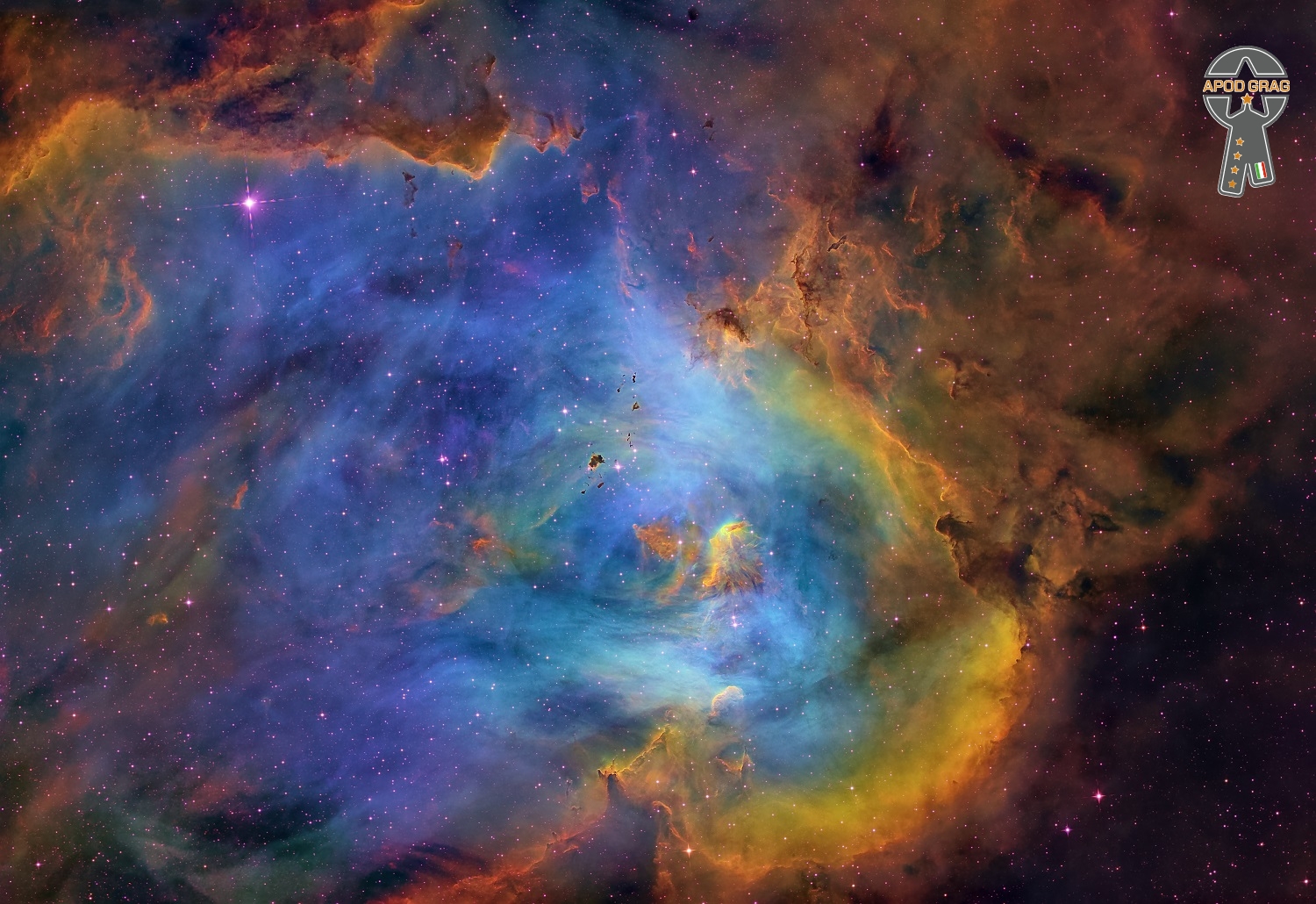
Jamaaladeen Tacuma (born Rudy McDaniel; June 11, 1956) is an American free jazz bassist born in Hempstead, New York. He was a bandleader on the Gramavision label and worked with Ornette Colemanduring the 1970s and 1980s, mostly in Coleman’s Prime Time band.
Tacuma showcased a unique style of avant-garde jazz on Coleman’s 1982 album Of Human Feelings, and became widely viewed as one of the most distinctive bassists since Jaco Pastorius. He formed his own group, and recorded albums that incorporated commercially accessible melodies while retaining Prime Time’s elaborate harmonies.
Tacuma, raised in Philadelphia, Pennsylvania, showed interest in music at a young age, performing with the organist Charles Earland in his teens. Through Earland, Tacuma came to know the record producer Reggie Lucas, who introduced Jamaaladeen to Ornette Coleman in 1975 at age 19. As the electric bassist for Coleman’s funky harmolodic Prime Time group, Tacuma rose to prominence quickly; guitarist Bern Nix was another band member. While with Prime Time, Tacuma relied mostly on traditional technique, picking with his fingers. His later work revealed a master improviser and showcased a more rhythmic, thumb-slapping funk approach.
more...Bernard Lee “Pretty” Purdie (born June 11, 1939) is an American drummer, and an influential R&B, soul and funk musician. He is known for his precise musical time keeping and his signature use of triplets against a half-time backbeat: the “Purdie Shuffle.”He was inducted into the Modern Drummer Hall of Fame in 2013.
Purdie recorded Soul Drums (1968) as a band leader and although he went on to record Alexander’s Ragtime Band, the album remained unreleased until Soul Drums was reissued on CD in 2009 with the Alexander’s Ragtime Band sessions. Other solo albums include Purdie Good! (1971), Soul Is… Pretty Purdie(1972) and the soundtrack for the blaxploitation film Lialeh (1973).
In the mid-1990s he was a member of The 3B’s, with Bross Townsend and Bob Cunningham.
Purdie was born on June 11, 1939 in Elkton, Maryland, US, the eleventh of fifteen children. At an early age he began hitting cans with sticks and learned the elements of drumming techniques from overhearing lessons being given by Leonard Heywood. He later took lessons from Heywood and played in Heywood’s big band. Purdie’s other influences at that time were Papa Jo Jones, Buddy Rich, Gene Krupa, Joe Marshall, Art Blakey, as well as Cozy Cole, Sticks Evans, Panama Francis, Louis Bellson, and Herbie Lovelle.
more...Hazel Dorothy Scott (June 11, 1920 – October 2, 1981) was a Trinidad-born American jazz and classicalpianist and singer. She was an outspoken critic of racial discrimination and segregation. She used her influence to improve the representation of Black Americans in film.
Born in Port of Spain, Scott moved to New York City with her mother at the age of four. Scott was a child musical prodigy, receiving scholarships to study at the Juilliard School when she was eight. In her teens, she performed at Café Society while still at school. She also performed on the radio.
She was active as a jazz singer throughout the 1930s and 1940s. In 1950, she became the first black American to host her own TV show, The Hazel Scott Show. Her career in America faltered after she testified before the House Un-American Activities Committee in 1950 during the era of McCarthyism. Scott subsequently moved to Paris in 1957 and began performing in Europe, not returning to the United States until 1967.
Born in Port of Spain, Trinidad and Tobago, on June 11, 1920, Hazel Dorothy Scott was the only child of R. Thomas Scott, a West African scholar from Liverpool, England, and Alma Long Scott, a classically trained pianist, and music teacher. In 1924, the family moved from Trinidad to the United States and settled in Harlem, New York City. Her parents had separated by this time, and Scott lived with her mother and grandmother.
more...Sheldon “Shelly” Manne (June 11, 1920 – September 26, 1984) was an American jazz drummer. Most frequently associated with West Coast jazz, he was known for his versatility and also played in a number of other styles, including Dixieland, swing, bebop, avant-garde jazz, and later fusion. He also contributed to the musical background of hundreds of Hollywood films and television programs.
Manne’s father Max Manne and uncles were drummers. In his youth he admired many of the leading swing drummers of the day, especially Jo Jones and Dave Tough. Billy Gladstone, a colleague of Manne’s father and the most admired percussionist on the New York theatrical scene, offered the teenage Shelly tips and encouragement.
From that time, Manne rapidly developed his style in the clubs of 52nd Street in New York in the late 1930s and 1940s. His first professional job with a known big band was with the Bobby Byrne Orchestra in 1940.In those years, as he became known, he recorded with jazz stars like Coleman Hawkins, Charlie Shavers, and Don Byas. He also worked with a number of musicians mainly associated with Duke Ellington, like Johnny Hodges, Harry Carney, Lawrence Brown, and Rex Stewart.
more...Mars and brilliant Venus are the prominent celestial beacons in planet Earth’s western skies after sunset. Wandering through the constellation Cancer the Crab, the Red Planet was captured here on the evening of June 3 near the stars of open cluster Messier 44. Recognized since antiquity this nearby, naked-eye star cluster is also known as the Praesepe or the Beehive cluster. A swarm of stars all much younger than the Sun, the Beehive cluster is a mere 600 light-years distant. Seen with a yellowish hue, Mars is about 17 light-minutes away. On June 12/13 Venus will take its turn posing next to the stars of the Beehive cluster. But the dazzling light of Venus will make the Beehive stars difficult to see by eye alone.
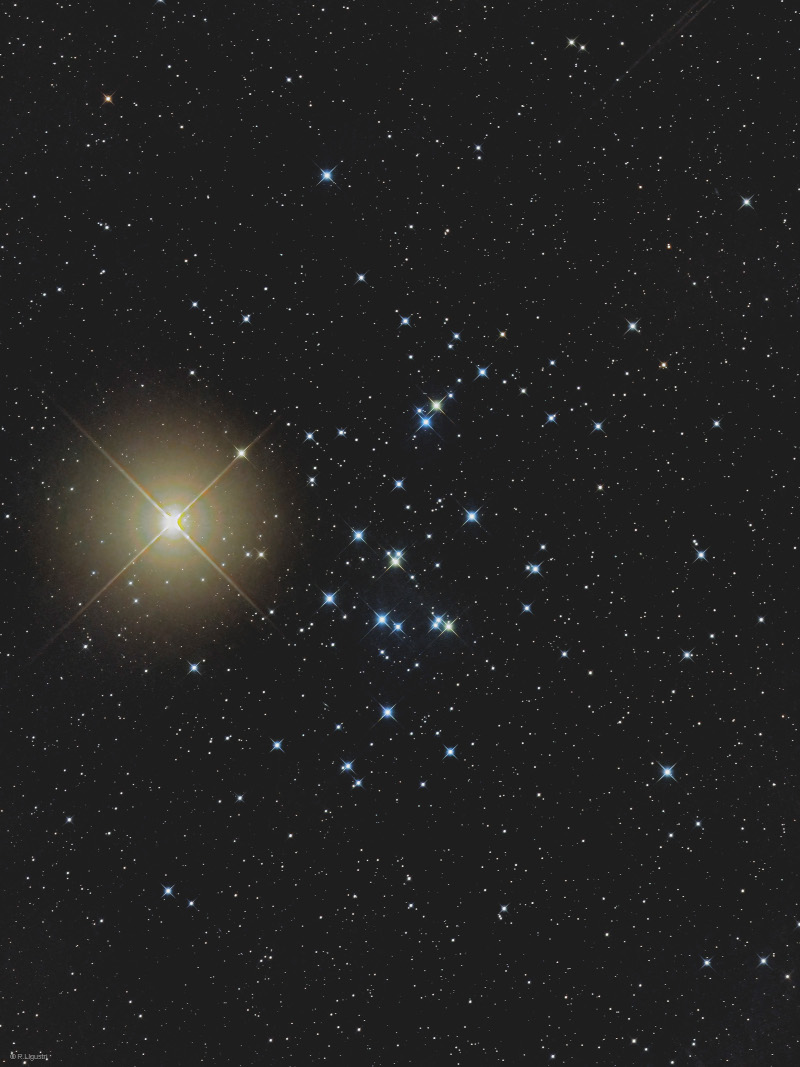
more...
Gary Thomas (born June 10, 1961) is an American jazz saxophonist and flautist, born in Baltimore, Maryland. He was a member of Jack DeJohnette‘s Special Edition band and has worked with John McLaughlin, Herbie Hancock, Pat Metheny, John Scofield, Jim Hall, Dave Holland, Greg Osby, Wayne Shorter, Ravi Coltrane, Cassandra Wilson, Wallace Roney, Steve Coleman, and Miles Davis.
Thomas was the Director and Chair of Jazz Studies at Johns Hopkins University in Baltimore.
more...Except for a two-year hiatus at the end of the ‘80s, Raul Rekow has been an integral part of the Santana Band since 1976. Joining their ranks was a dream come true for the San Francisco native who, as a teenager, first witnessed Carlos and company onstage at the Cow Palace, appearing second to last on a mammoth bill of twenty acts. The life-changing experience inspired Raul to take up congas, and he soon began playing with Soul Sacrifice, a popular late ‘60s/early ‘70s Bay Area club band specializing in Santana covers. That led to his joining Malo, the Latin funk-rock outfit — featuring Carlos’ brother Jorge Santana on guitar—that had a huge crossover hit in 1972 with “Suavecito.” A stint with Sapo, another Latin fusion act followed, and then came the call from the Santana office, asking Raul to jam with Carlos and Tom Coster. Soon after, Carlos invited Raul to join the band, and the rest, as they say, is history.
Over the years, Raul has also lent his talents to recording and performing with artists including Aretha Franklin, Patti Labelle, Whitney Houston, Tremaine Hawkins and Herbie Hancock. He has a ‘Signature Series’ conga drum and bongo made by Latin Percussion, and along with fellow Santana percussionist Karl Perazzo, recently completed the CD “Just Another Day In The Park,” and the video/interactive DVD “Supernatural Rhythm and Grooves, where students and fans can play along with Raul’s magical beats.
more...João Gilberto (born João Gilberto do Prado Pereira de Oliveira – ; 10 June 1931 – 6 July 2019) was a Brazilian guitarist, singer, and composer who was a pioneer of the musical genre of bossa nova in the late 1950s. Around the world, he was often called “father of bossa nova”; in his native Brazil, he was referred to as “O Mito” (“The Legend”).
João Gilberto was born in Juazeiro, Bahia, the son of Joviniano Domingos de Oliveira, a wealthy merchant, and Martinha do Prado Pereira de Oliveira. He lived in his native city until 1942, when he began to study in Aracaju, Sergipe, returning to Juazeiro in 1946. At the age of 14, Gilberto got his first guitar from his grandfather despite disapproval from Gilberto’s father. Still in Juazeiro, he formed his first band, called “Enamorados do Ritmo”. Gilberto moved to Salvador, Bahia, in 1947. During his three years in the city, he dropped out of his studies to dedicate himself exclusively to music and at the age of 18 began his artistic career as a crooner at the Rádio Sociedade da Bahia.
more...Chester Arthur Burnett (June 10, 1910 – January 10, 1976), better known by his stage name Howlin’ Wolf, was an American blues singer and guitarist. He is regarded as one of the most influential blues musicians of all time. Over a four-decade career, he recorded in genres such as blues, rhythm and blues, rock and roll, and psychedelic rock. He also helped bridge the gap between Delta blues and Chicago blues. Born into poverty in Mississippi as one of six children, he went through a rough childhood where his mother kicked him out of her house, and he moved in with his great-uncle, who was particularly abusive. He then ran away to his father’s house where he finally found a happy family, and in the early 1930s became a protégé of legendary Delta blues guitarist and singer, Charley Patton. He started a solo career in the Deep South, playing with other notable blues musicians of the era, and at the end of a decade had made a name for himself in the Mississippi Delta.
After going through some legal issues and undergoing a particularly rough experience while serving in the Army, he moved to Chicago, Illinois, in adulthood and became successful.
more...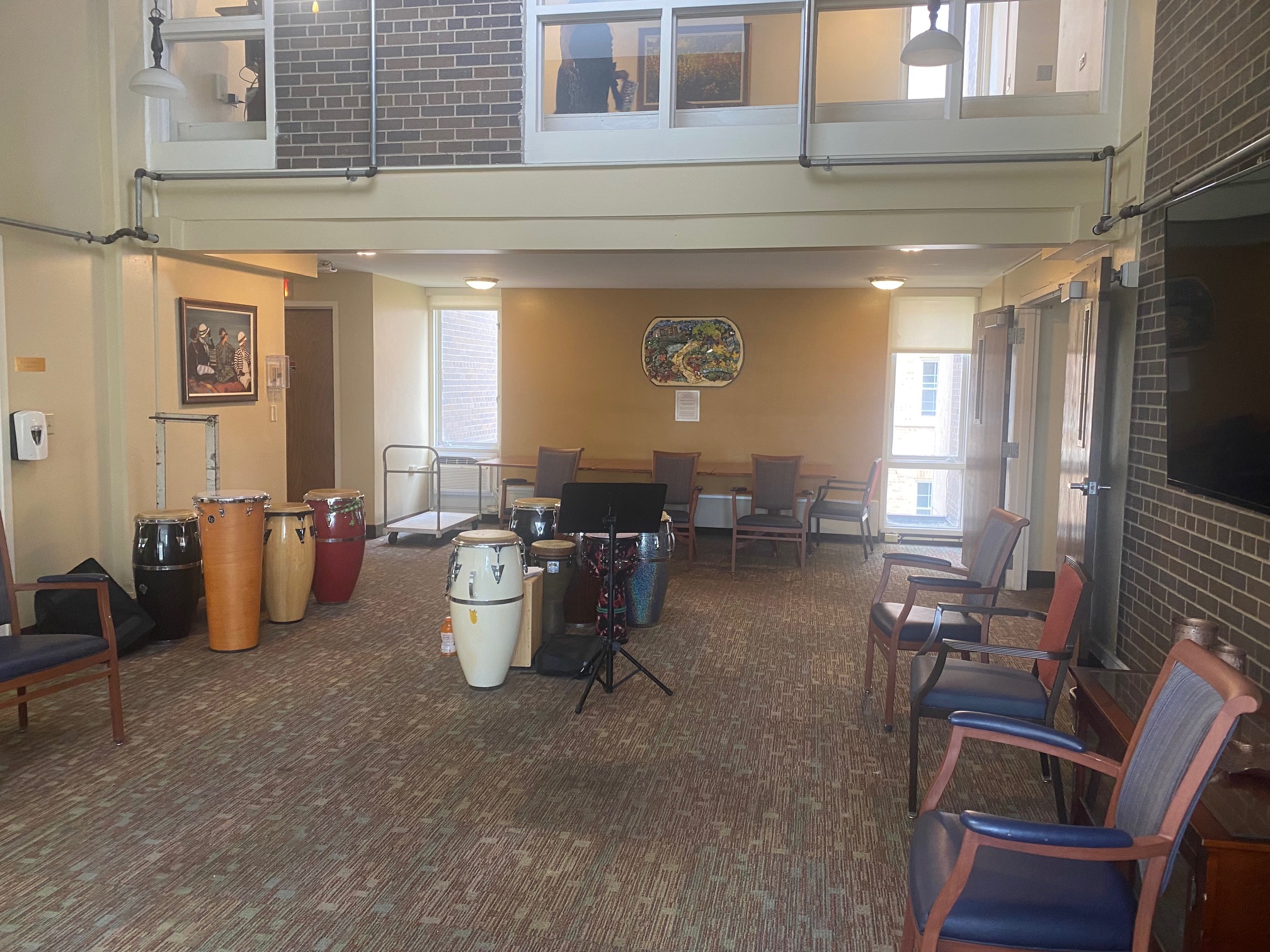
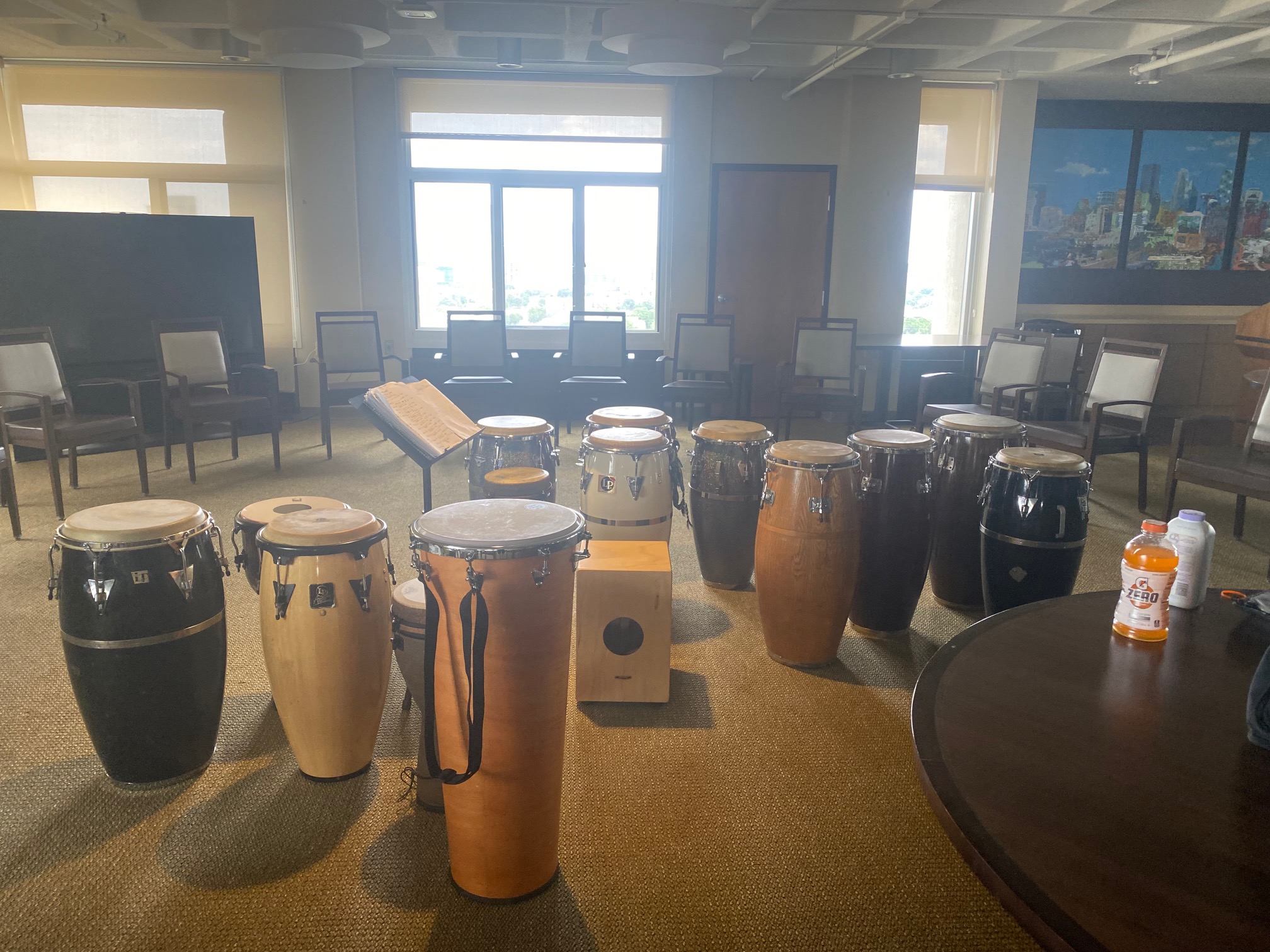
This deep field mosaicked image presents a stunning view of galaxy cluster Abell 2744 from the James Webb Space Telescope’s NIRCam. Also dubbed Pandora’s Cluster, Abell 2744 itself appears to be a ponderous merger of three different massive galaxy clusters some 3.5 billion light-years away toward the constellation Sculptor. Dominated by dark matter, the mega-cluster warps and distorts the fabric of spacetime, gravitationally lensing even more distant objects. Redder than the Pandora cluster galaxies many of the lensed sources are very distant galaxies in the early Universe, stretched and distorted into arcs. Of course distinctive diffraction spikes mark foreground Milky Way stars. At the Pandora Cluster’s estimated distance this cosmic box spans about 6 million light-years. But don’t panic. You can explore the tantalizing region in a 2 minute video tour.
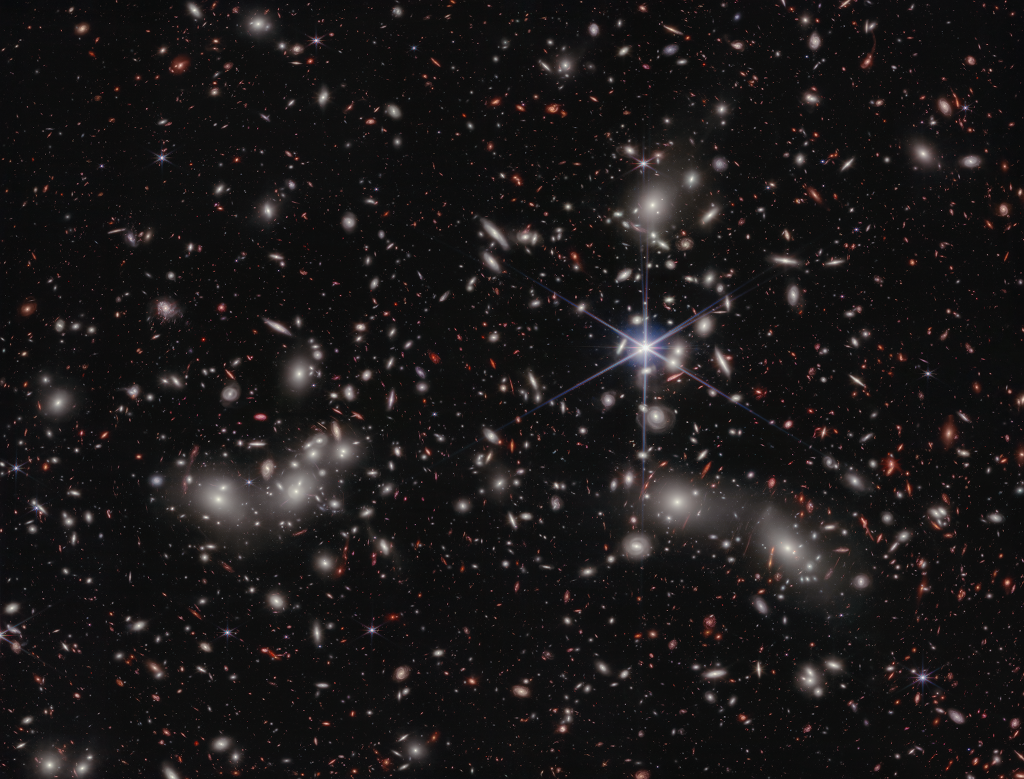
More Posts
- Sonny Til Day
- Enoch Light Day
- Antonio Salieri Day
- Daily Roots with George Allison
- The Cosmos with IC 2177
- Luther Allison Day
- Floyd Westerman Day
- Duke Pearson Day
- World Music with Les Filles de Illighadad
- Daily Roots with Tony Clarke
- The Cosmos with VDB 142
- Carl Perkins Day (jazz piano)
- Bill Evans Day
- Mal Waldron Day
- World Music with Paco de Lucia
- Daily Roots with Sylford Walker
- The Cosmos with NGC 2022
- Joe Castro Day
- Oscar Peterson Day
- Buster Brown Day